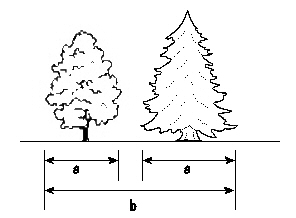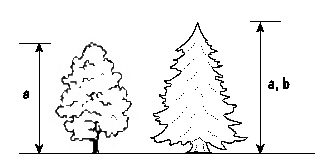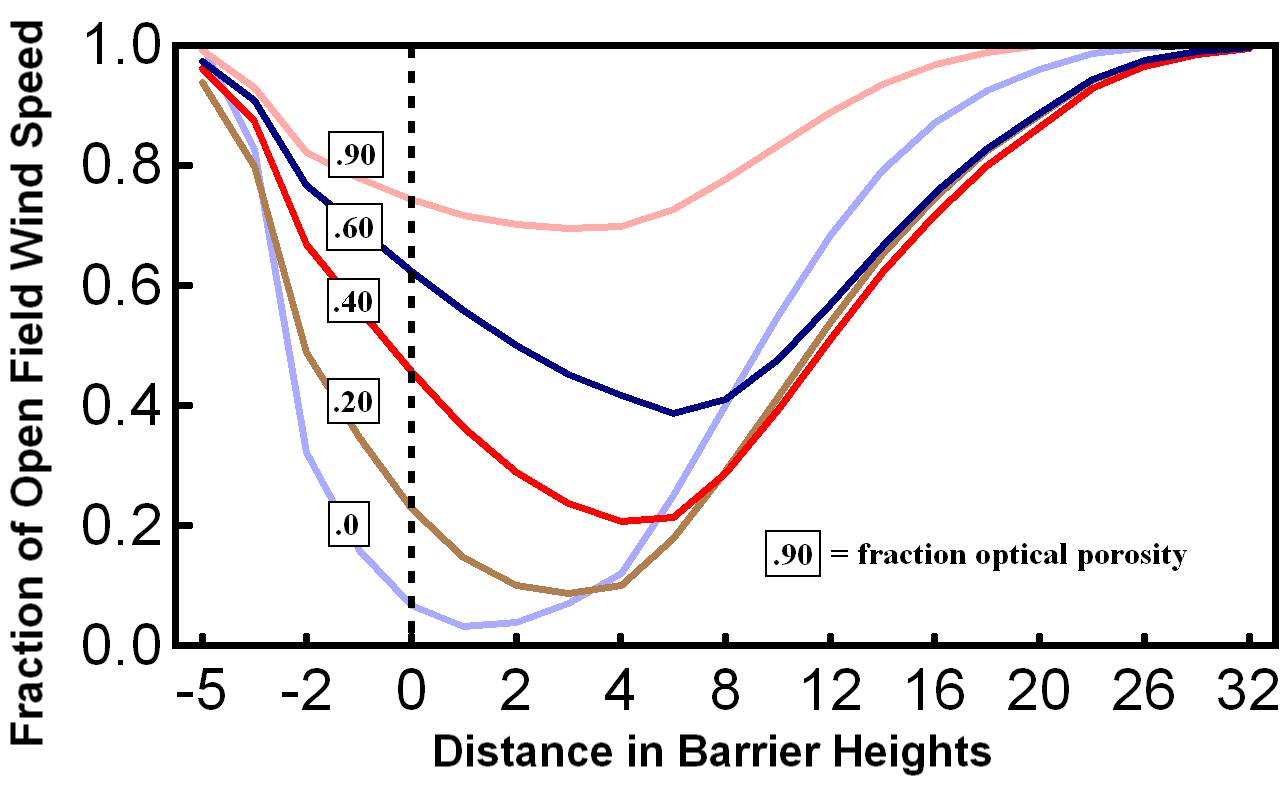
Using WEPS, we can quickly determine the field edge where the greatest amount of eroded soil is leaving the field. In most cases, a field windbreak would be most effective on the upwind side of this field.
Wind barriers in WEPS include any structure designed to reduce the wind speed on the downwind side of the barrier. Barriers trap moving soil and reduce abrasion of the downwind immobile clods, crusts, and residues along the prevailing wind erosion direction. Barriers include but are not limited to, linear plantings of single or multiple rows of trees, shrubs, or grasses established for wind erosion control, crop protection, and snow management. Snow fences, board walls, bamboo and willow fences, earthen banks, hand-inserted straw rows, and rock walls have also been used as barriers for wind erosion control in limited situations. Barriers also reduce evapotranspiration, shelter livestock, and provide wildlife habitat. One advantage of barriers over most other types of wind erosion control is they are relatively permanent. During drought years, barriers (excepting annual types) may be the only effective and persistent control measure on crop land. Annual barriers are used primarily to provide temporary protection during the most critical wind erosion period and can be removed and replaced every year. Barriers can also be used in sand dune areas to aid the initial stabilization of the areas while grass and trees are being established.

Figure 1. Diagram showing wind flow pattern over a barrier.
Barriers primarily alter the effect of the wind force on the soil surface by reducing wind speed on the downwind side of the barrier but also reduce wind speed to a lesser extent upwind of the barrier (Fig. 1). Research has shown that barriers significantly reduce wind speed downwind, sheltering a portion of the field from erosion and in effect, reducing the field length along the erosive wind direction. However, the protected zone of any barrier diminishes as porosity increases and is reduced significantly when barrier porosity exceed 60 percent. Protection is also reduced as wind velocity increases but the protected area diminishes as the wind direction deviates from the perpendicular to the barrier. Various types of barriers are used for wind erosion control in WEPS 1.0. The WEPS interface provides a method of selecting from a list of barriers to place on the field and editing the barrier properties. The user can also modify properties in the barrier database that appear in the drop down list. Each of these properties are described below.
The length of a barrier is defined by field length along the border on which the barrier is placed.

Figure 2. Barrier width for a single (a) and multiple (b) row barrier.

Figure 3. Barrier height for a single (a) and multiple (b) row barrier.

Figure 4. Effect of the fraction of optical porosity on near surface wind speed along the wind direction relative to barrier.

Figure 5. Effect of number of barrier rows on optical porosity where all barrier rows are the same.
At times, it is most efficient to estimate optical porosity for a single row, particularly for crop barriers. Then for multiple row barriers, the optical porosity decreases for the entire barrier as illustrated in Figure 5. For example, a single row of corn has an optical porosity of 0.80. Three rows of corn have an optical porosity of 0.50 while five rows of corn have an optical porosity of 0.33.